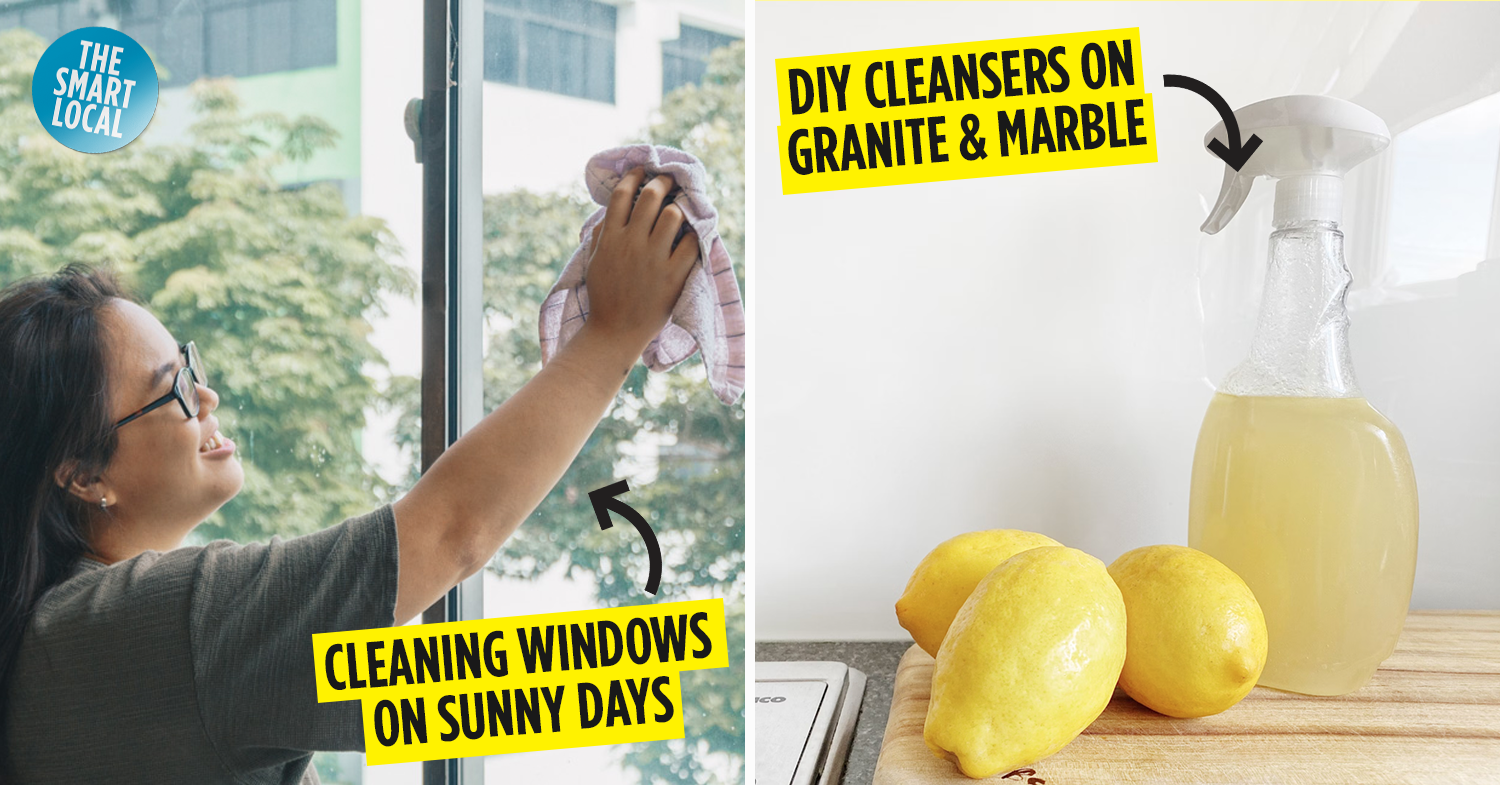Common cleaning mistakes
Our parents may have done most of the household chores while we were kids, but there comes a time when we all evolve into responsible adults and help out whenever the opportunity arises. If you think cleaning simply involves busting out a cloth and wiping, well – you’ve got a lot more to learn.
Unbeknownst to us, some chores such as scrubbing out carpet stains and wiping down windows on a sunny day may actually be making things dirtier. So before you do another round of chores, check out these common cleaning mistakes, along with ways we can avoid doing it again in the future.
Table of Contents
- Common cleaning mistakes
- 1. Cleaning windows on a sunny day
- 2. Soaking your wooden floors when you mop
- 3. Rubbing or scrubbing stains out of your carpets
- 4. Putting a toilet brush back into its holder immediately after use
- 5. Spraying your cleaning product directly onto the surface
- 6. Cleaning floors first
- 7. Cleaning windows with newspaper
- 8. Using disinfectants to “clean” surfaces
- 9. Not cleaning your household appliances
- 10. Using lemon juice or vinegar on granite & marble countertops
1. Cleaning windows on a sunny day
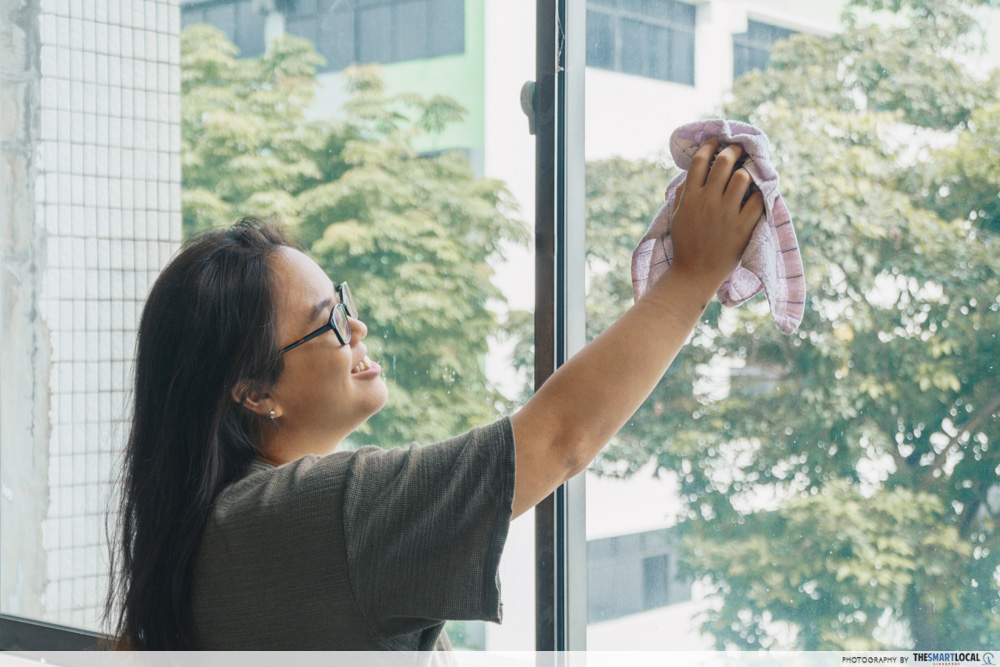
Some chores like leaving the laundry out to dry are better done on sunny days – after all, a hot day = faster drying time. And by that logic, we may think the same applies to tasks like cleaning our windows as well.
Unfortunately, that concept isn’t true. The heat will cause the chemicals in our cleaning products to dry too rapidly, which may leave unsightly smears or streaks on your window pane.
The right way: The best time to clean your windows would be on a cloudy day when the temperature isn’t too warm. But if you’re in the midst of a hot and dry spell, you can opt to wipe your windows down in the morning or evening when it’s cooler.
2. Soaking your wooden floors when you mop
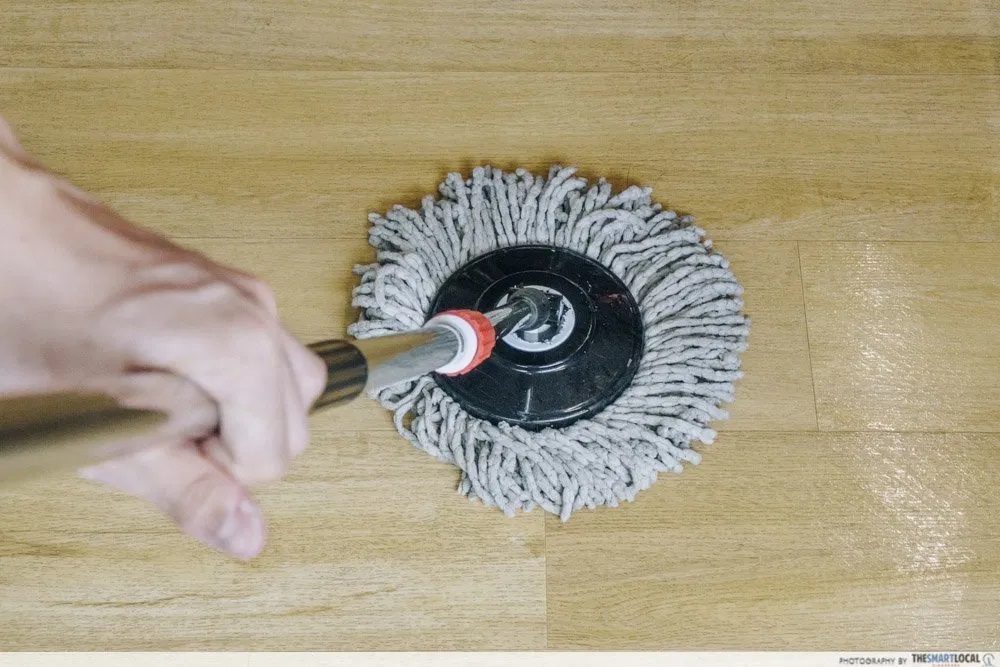
Wooden floors are essential if you’re gunning for those rustic vibes at home. But unlike marble or concrete floorings, wooden floors will require extra care with a special set of do’s and don’ts, with the most important one being to avoid using excessive water while mopping.
Reason being, wood absorbs water, which causes swelling and cracking. Hardwood floors that are supposedly waterproof aren’t exempt from this rule either, as the water may still ruin the finish and damage the wooden fibres.
The right way: Dry mop with a microfibre mop as much as possible. On days when the floor feels particularly mucky, make sure that your mop is only slightly damp before using it – you can get rid of the excess water with a mopping bucket that comes with a spin or wringer.
3. Rubbing or scrubbing stains out of your carpets
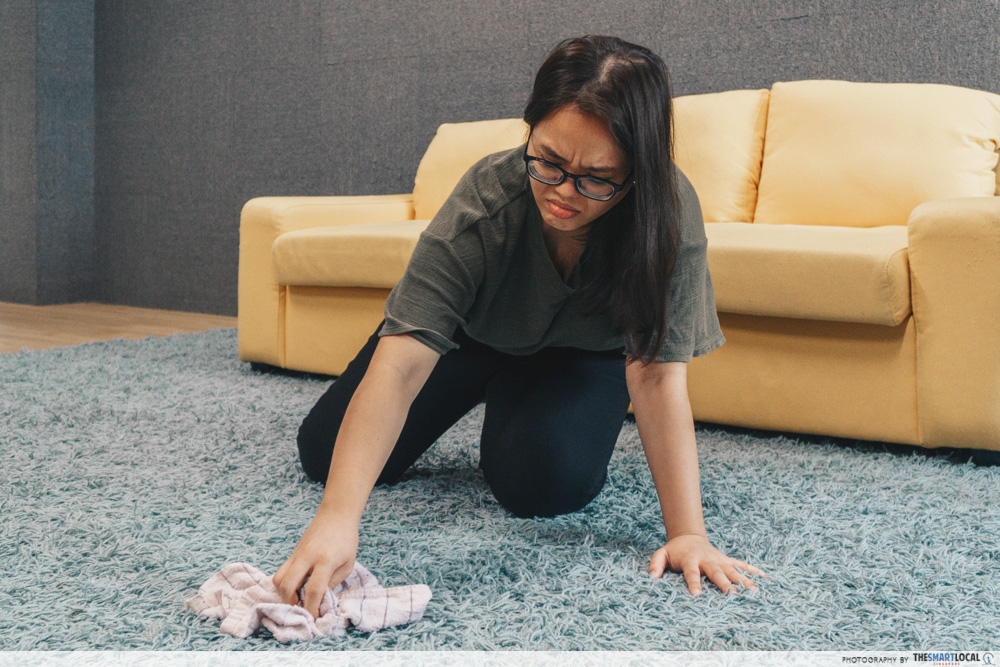
Spilling something can be a panic-inducing moment – especially when you see a big, ugly stain gradually spreading on your beautiful carpet.
But before you get on your knees and scrub the life out of your carpet, remember that doing so will a) ruin the carpet fibers, and b) cause the liquid to soak deeper into the carpet. You won’t just be compromising your carpet’s lifespan, but you’ll also be making the stain increasingly difficult to get rid of.
The right way: Being gentle but quick is key while dealing with carpet stains. As soon as the stain happens, spray some detergent onto a cloth and dab at the stain. As the stain begins dissolving, get a damp cloth and dab again to remove the excess detergent.
4. Putting a toilet brush back into its holder immediately after use
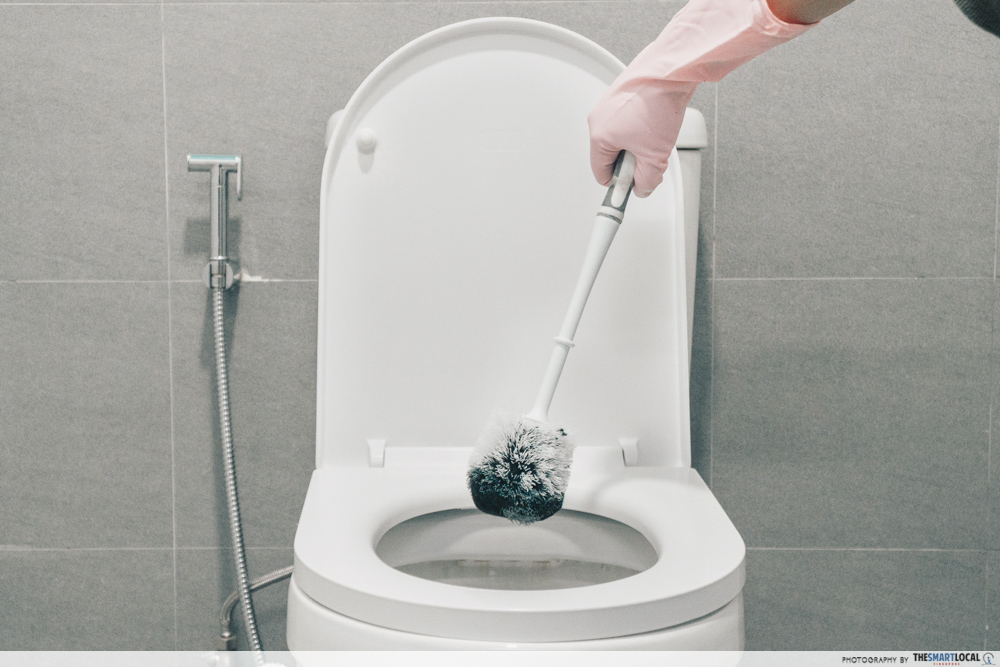
Scrubbing the toilet bowl is icky business, and in our haste to finish the deed, we tend to throw the toilet brush back into its holder right after rinsing the yucky stuff out.
However, doing so while the brush is still damp makes it easier for mould and bacteria to grow. And if you continually clean with the same brush, you’ll be leaving traces of mould, bacteria, and not to mention, fecal matter all around your toilet bowl.
The right way: After cleaning, give your brush a thorough rinse to get rid of the grime. After that, let the brush dry first before putting it back into the holder – you can place it under sunlight to dry off and prevent bacterial growth.
5. Spraying your cleaning product directly onto the surface
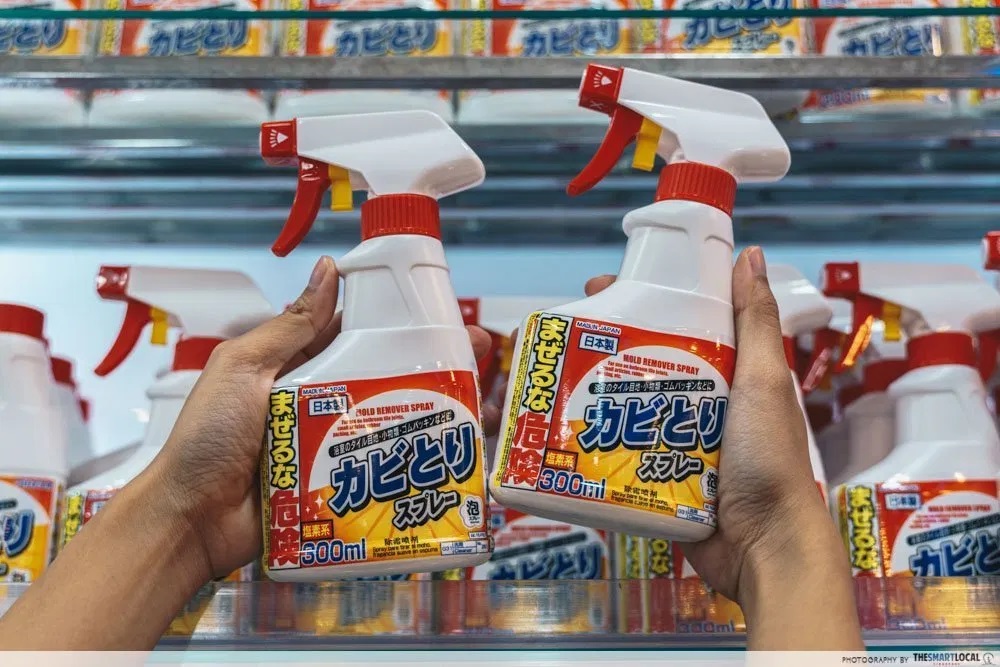
Cleaning products should be sprayed onto a cloth or paper towel first before wiping.
We may think that spraying disinfectant directly onto our surfaces helps us make full use of the product. But by spritzing it all over, we tend to use way more than what we need, which leads to wastage.
And with excessive product left on the surface, this might cause a buildup of the solution – especially if you don’t have a habit of wiping it off with a damp cloth. The residue left behind by these products can attract dirt and cause microbes to grow, making your surfaces even dirtier than it was.
The right way: Spray your product onto a cloth first. This way, you’re less likely to use as much product as you would as compared to spraying it onto your surface. Once you’re cleaned your surfaces, wipe it down again with a damp cloth to get rid of excess residue.
6. Cleaning floors first
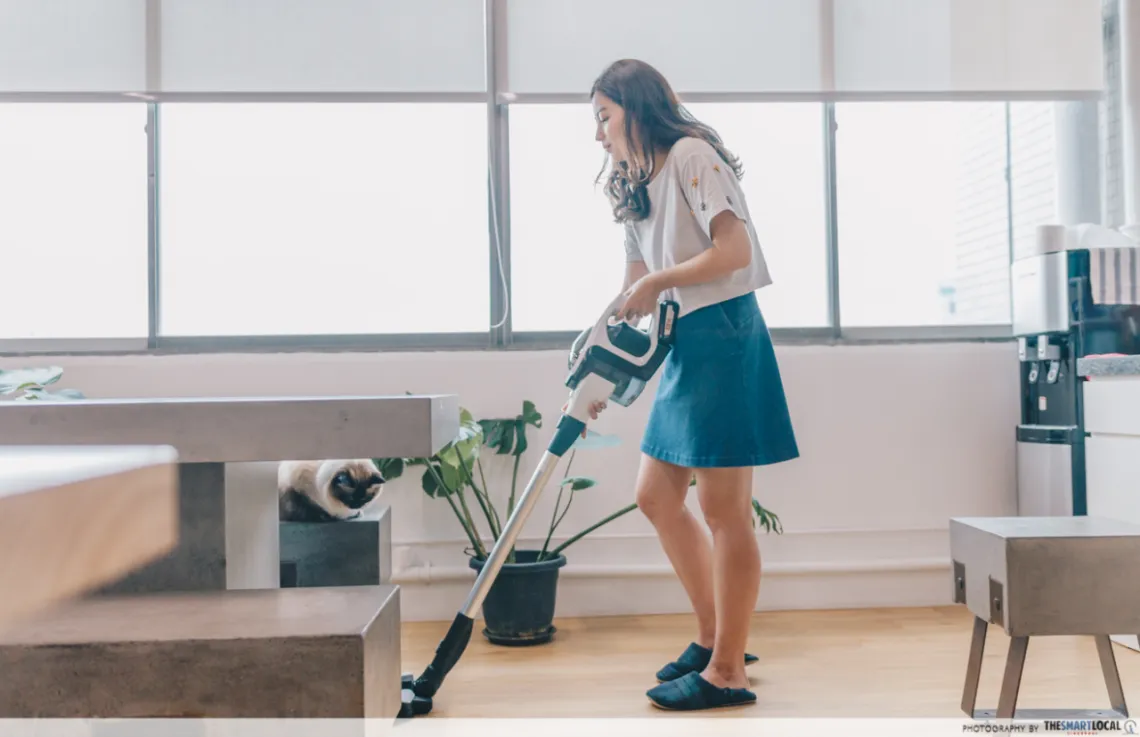
Every household has their own cleaning routines, but if you’re one of those people who prioritises mopping the floor first, here’s why you need to reorder this step. By doing chores like dusting and wiping after you mop, you’ll be knocking dirt, dust, and food crumbs onto the floor you’ve already cleaned – which means you’ll need to mop again.
The right way: It’s best to leave the floor alone until you’ve cleaned everything else – that way, you’ll be able to collect all the dirt from nooks and crannies on the ground before cleaning it all at one go.
7. Cleaning windows with newspaper

Back when microfibre towels weren’t a thing, using newspapers to wipe down our windows was a common practice. It was cheap, accessible, and it didn’t leave lint in its wake like rags did, which made it a popular cleaning tool in households across the world.
The lesser-known downside to using newspapers in place of cloth: newspaper ink can smudge. While it’s not likely to stain the glass panes, it can still smear your window frames – and getting rid of these unsightly marks won’t be an easy feat.
The right way: Microfibre towels are your best bet as they won’t leave lint on your window panes. Alternatively, you can also use a brown paper bag, sponges, or squeegees.
8. Using disinfectants to “clean” surfaces
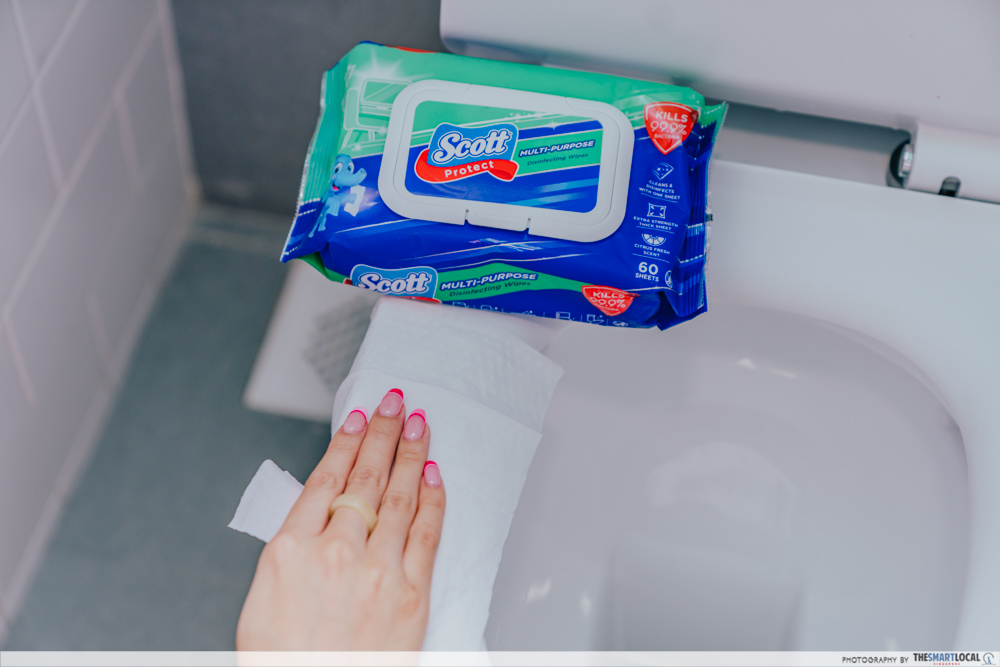
Use disinfectant wipes after you’re done cleaning surfaces.
It seems logical – disinfectants are used to sanitise surfaces, so there’s no need to clean first. But doing so diminishes the effectiveness of the disinfectant; all you’re getting is sanitised dirt, which isn’t really clean at all.
The right way: Wash dirt and grime away using warm soapy water first, which will help to degrease surfaces and get them squeaky clean. Only then do you use a disinfectant, whether as a spray or a wipe.
9. Not cleaning your household appliances
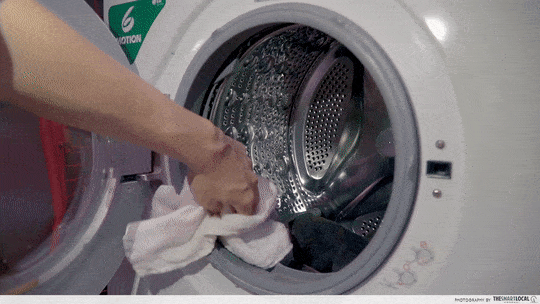
Contrary to popular belief, just because your household appliances clean things doesn’t mean they also stay clean. Washing machines, for example, tend to trap soap residue and clothing fibres, which may stain your clothes instead. Shower heads, too, should be cleaned regularly to descale mineral deposits and possible algae and mould growth.
The right way: It depends on the appliance, but each one should be cleaned at least once a month. Some may require special cleansers and some just need a good rinse with soap and water. You can check our guide to cleaning household appliances for more information.
10. Using lemon juice or vinegar on granite & marble countertops
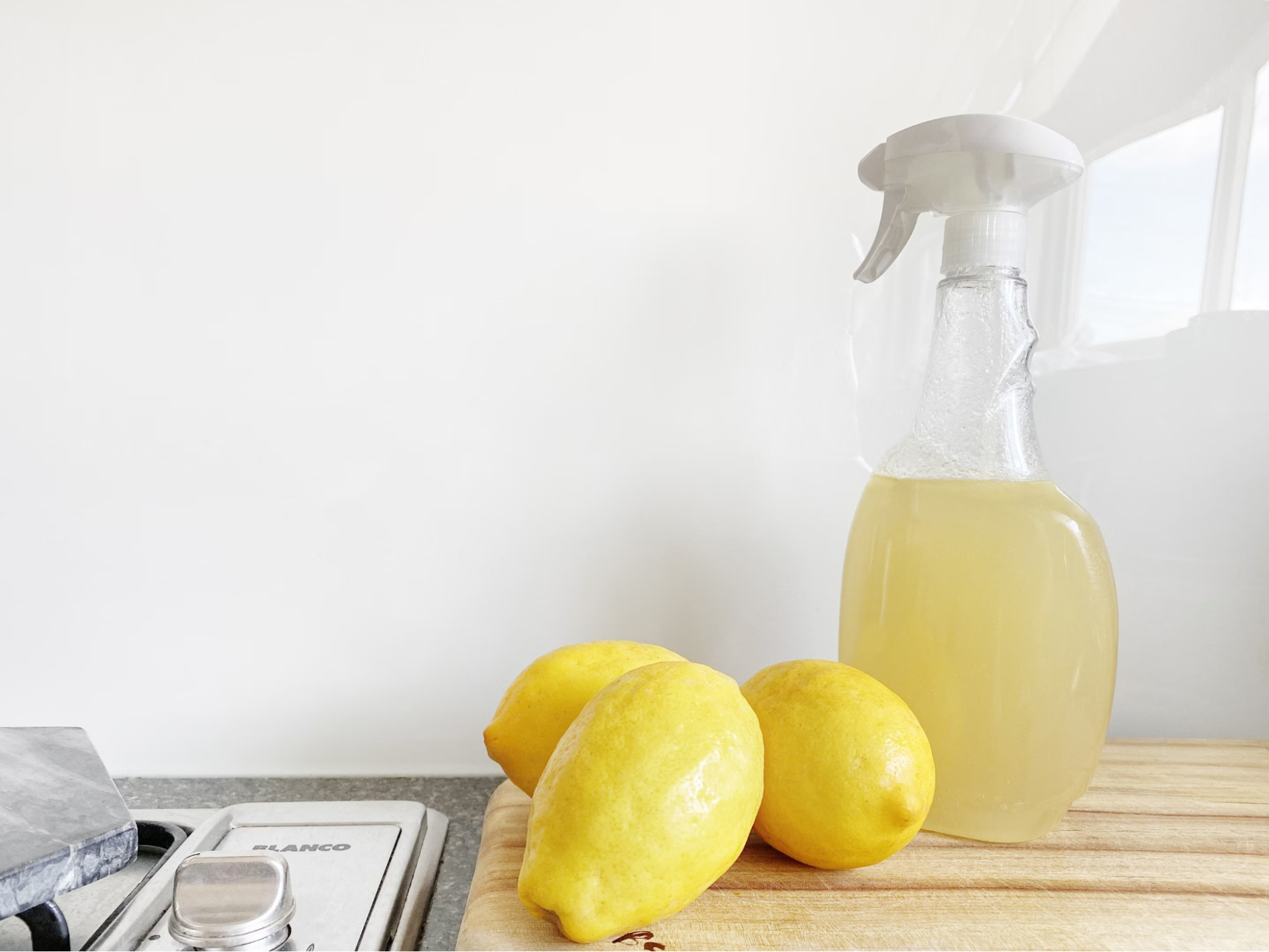
Image credit: Precious Plastic Melbourne via Unsplash
Lemon juice and even vinegar have antibacterial properties, so it’s no wonder many homemakers add either to DIY household cleansers. But, you might want to hold back when using such cleansers on granite and marble countertops, as the acids are corrosive. You’ll be left with rough patches of damage that spoil the look of your countertops.
The right way: To effectively clean your countertops, wash with detergent and water, then disinfect by spraying isopropyl alcohol on the surface. Let sit for 10 minutes to allow the alcohol to kill any bacteria. Your countertops will be clean enough to knead dough on.
Cleaning mistakes that are common
Cleaning your home may seem like a straightforward task, but these common mistakes show that it isn’t as easy as it looks. Be sure to keep these in mind for future cleaning sprees, lest your house becomes filled with ink stains, buildup, and dust piles.
Check out our other household-related articles:
Cover image adapted from: Precious Plastic Melbourne via Unsplash
Originally published on 28th July 2020. Last updated by Raewyn Koh on 3rd July 2024.
